The Fifteenth USA ARDF Championships
and Eighth IARU Region 2 ARDF Championships
Elbert, Colorado, August 27-30, 2015
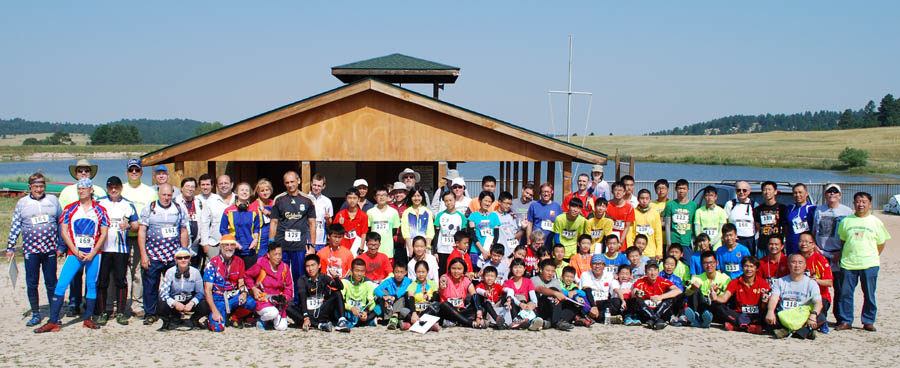
Competitors and volunteers just before the two-meter classic event.
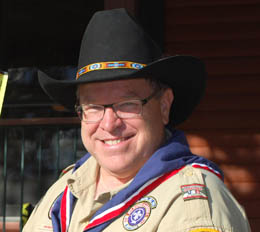
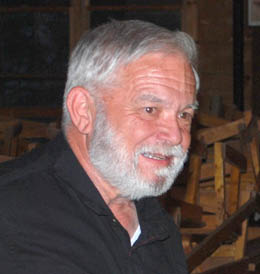 Scouting and Amateur Radio -- what a great combination! Untold numbers of new and old hams first learned about Amateur Radio from Scout leaders. In your father's time, the introduction may have been through QRP contacts on the HF bands at a wilderness campsite. Nowadays it's more high-tech, as Scouts and their leaders coordinate mirror flash experiments between mountaintops using VHF simplex or repeaters.
Scouting and Amateur Radio -- what a great combination! Untold numbers of new and old hams first learned about Amateur Radio from Scout leaders. In your father's time, the introduction may have been through QRP contacts on the HF bands at a wilderness campsite. Nowadays it's more high-tech, as Scouts and their leaders coordinate mirror flash experiments between mountaintops using VHF simplex or repeaters.
There is another Amateur Radio activity that is perfect for Scouts: hidden transmitter hunting. It builds and reinforces basic wilderness skills. It's a technical challenge and it improves fitness while providing a source of intrigue and adventure.
Foxhunting in Peaceful Valley
In August 2014, I had the opportunity to travel to eastern Colorado to help introduce foxhunting to dozens of Venture Scouts. They had come to Peaceful Valley Scout Ranch (PVSR) for the Western Region Venturing Youth Extravaganza.
PVSR is a beautiful 3300-acre site at 7000 feet elevation. It's about 40 miles southeast of downtown Denver and 30 miles northeast of Colorado Springs. Once home to the Arapaho and Kiowa Indians, it was settled in the late 1800s and became a productive farming community around 1900. With Kiowa Creek as the main water source, farmers and ranchers raised potatoes and dairy cattle in the area.
In 1961, the Boy Scouts of America purchased the ranch and four years later, it opened to campers. PVSR remains a working ranch with about a thousand acres set aside for crops and cattle. Income from the ranching operation and cash crops of alfalfa, wheat and oats provide for ranch maintenance and operation.
Almost every outdoor Scouting activity takes place at PVSR, including swimming, scuba diving, shooting, archery and rock climbing. Last year, the Extravaganza participants had a new activity to try, thanks to Brian Coleman (at right) of the Denver Scout Council and the Rocky Mountain Orienteering Club (RMOC). Brian's favorite activity is map-and-compass navigation in the woods and plains. He has become an expert in mapping techniques and has created beautiful detailed maps of several sites, including PVSR.
Brian loves to teach Scouts to find their way in the wilderness with map and compass. He is always looking for new ways to make it into an adventure and a game for them. So it's no surprise that when he first heard about ham radio foxhunting, Brian was quick to add it to his bag of tricks. On-foot foxhunting under international rules, called radio-orienteering and Amateur Radio Direction Finding (ARDF), is the perfect combination of transmitter hunting and orienteering.
At the time, Brian had been so busy with working, mapping and teaching that he hadn't gotten his ham license. Nevertheless, he continued to increase his collection of measuring-tape antennas and direction-finding receivers. He and the Scouts didn't need licenses to go transmitter hunting and he had many ham friends in the Council to help with the transmitters. For the Venturing X-Games, the helpers were Marvin Johnston KE6HTS (at left) and I, plus some operators of KBØBSA, which is PVSR's ham radio station.
KBØBSA is in the Branding Iron building at Camp Cris Dobbins. That's where Venturing Scouts could come to learn how to use two-meter RDF gear on the Saturday of the Venturing Extravaganza. I had five fox transmitters waiting in the woods. They were all on different frequencies, which made it easier for Scouts to learn the tricks of the trade.
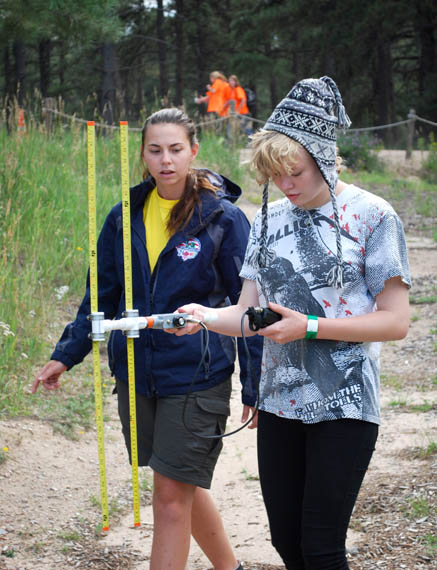
These Venture Scouts had a wonderful time and learned about Amateur Radio as they sought my two-meter hidden transmitters at Peaceful Valley Scout Ranch during the Western Region Venturing Youth Extravaganza in August 2014.
As the Scouts gleefully went out to discern the transmitter locations, Marvin and I realized that PVSR would be an ideal location for the next USA Championships of ARDF. With much help from Brian and RMOC, it came to pass during the last week and weekend of August 2015. I had no sooner announced the date and site than e-mails started coming in, wanting to know when registration would open. By the time it was over, it had drawn the greatest participation ever for the USA ARDF Championships.
In the past, visiting competitors have come from Australia, Canada, Germany, United Kingdom, Russia and other countries where ARDF is a popular radiosport. But this time, the only available dates for us at PVSR were in the last week and weekend of August, which was immediately after the IARU Region 1 Championships in the Czech Republic. That conflict kept most of the Europeans away, but it opened the door for a large group from Asia.
In January 2015, I received e-mail from Mengbing Li, who participated in the 2013 USA ARDF Championships in North Carolina. She is a graduate of Guangzhou No. 2 High School in China and is attending college in the USA. "Anna," as she is called here, wanted to know if a group of students from her old school could come to the USA to be in our 2015 championships. Invitation letters were sent, reservations were made and on August 16, fifty-seven middle- and high-school students, along with several adult chaperones and a translator, arrived in San Francisco. They toured in California and Nevada, then headed for Denver in time to board a big bus and get to our first ARDF session on August 24.
ARDF Training by Immersion
ARDF Week in eastern Colorado got under way with three days of optional training before the championship contests. All of the Chinese students and about a third of the others participated in this informal training. A few camped out in PVSR, but most stayed in the hotels of Castle Rock and Colorado Springs.
It's fairest when each championship foxhunt is in an area that's unfamiliar to the participants. PVSR is 3300 acres of woodlands, open space and cultivated fields. It's big enough for all of the championship events to be in different areas, but not big enough to include the training days. So the training site for Monday and Tuesday was Round Mountain, a well-mapped 1050-acre forest north of US Highway 24, about 45 miles west of Colorado Springs.
RMOC arranged for everyone to gather at the M-Lazy-C Dude Ranch and Homestead, which is on the northeast edge of the mapped area. Training began with a classic 80m five-fox course with standard fox timing. Only start and finish were marked on the map. Five radio foxes were on the air on one frequency, each transmitting for 60 seconds in rotating order. After lunch, there was a session of foxoring, a combination of RDF and classic orienteering on 80 meters in which participants navigate to marked locations on their maps where very low power transmitters can be found nearby.
On Tuesday, trainees returned to the dude ranch for another trip into the woods. This time it was a classic 2m event, which is just like eighty meters except that the transmitters send tone-modulated AM on VHF instead of CW on HF. Since 80m signals don't reflect from buildings and hills, two-meter ARDF is more difficult and finish times are not as good. ARDF on 2m requires more skill to mentally sort out the direct bearings from the reflections. This skill is developed by lots of practice, so most trainees tried to find all five transmitters, even if they were required by their age/gender category to only seek three or four of them.
Wednesday's training was in the sprint event. In it, there are ten 80m transmitters to find, but they are much closer together than in a classic event. A smaller venue is fine for the sprint, so Marvin and Brian chose Fox Run Regional Park, about 17 miles southwest of PVSR.

There was wildlife at Peaceful Valley Scout Ranch, but it was mostly friendly.
Earning Their Medals
By Thursday, most of the stateside competitors were on hand for the first competitive event -- foxoring. This was the first ARDF session at Peaceful Valley. It was also the first competitive test for the starting line volunteers, with starts at two-minute intervals and groups made up of different age/gender categories. The volunteers were up to it and everything went smoothly.
There were ten low-power 80m foxes to find. The best time of the day was by Illya Ivanko of Krasnyi Lyman, Ukraine, who found them all in just under 28 minutes. Norbert Linke of Stevenson, Maryland was a close second, finding them all in 31 and a half minutes. Six participants weren't eyeing their watches, so they went over the one-hour time limit and were disqualified.
Next morning, all were gathered at Camp Cris Dobbins headquarters on PVSR's east side for the sprint championships. It was another challenge for the start crew with ten 80m transmitters, two-minute intervals and a one-hour time limit as before. Illya Ivanko had an amazing time of less than eleven and a half minutes, leading Jiabo Lan of China, who did it in 1212. USA's best performance was nine required foxes in just over 15 minutes by Nicolai Mejevoi of Rockford, Illinois. One Chinese boy got lost and ended up wandering in a nearby farmer's field. A farm worker discovered him and drove him back to PVSR headquarters.
Everyone rested up that afternoon to be ready for Saturday's two-meter classic event, which would be the most difficult of the week. Starting from Silver Lake boathouse, the hunt area encompassed all of Camp Cris Dobbins and the woods to the south of it. With starting intervals at five minutes, it took an hour and 45 minutes for everyone to get onto the course. Time limit was 180 minutes and some competitors finished very close to that. But experience paid off and eight seasoned runners found all their required foxes and got to the finish line in under an hour. Illya had best overall time again.
The traditional Saturday evening banquet was catered by Bennett's Barbecue, a local favorite. Everyone filled up on beef, chicken and pork with sauce and all the fixings. Then it seemed as if a hundred cameras appeared as gold, silver and bronze medals were presented for the foxoring, sprint and two-meter events.
Sunday's 80m classic hunt start was a half-hour earlier than the day before, because some participants had to get to the airport for flights to home. The 80m map included Camp Dietler, the Sporting Clays shooting range and surrounding wilderness. The number of acres was about the same as for the two-meter event.
This time, Illya wasn't first in M21 category. Norbert Linke's time for all five foxes was just over a minute shorter. Thirty-seven per cent of the starters ended with times under an hour and only three of them had times over two hours.
USA's winners of overall gold medals were, in alphabetical order, Vadim Afonkin KB1RLI (M40 80m, 2m, Sprint, Foxor), Alexandra Bondarenco (W21 2m), Natalia Bondarenco (W35 80m), Bob Cooley KF6VSE (M60 80m, Sprint, Foxor), Marjorie Garrett KJ4ZKC (W50 2m), Jay Hennigan WB6RDV (M60 80m, 2m, Sprint), Joseph Huberman K5JGH (M60 Foxor), Harley Leach KI7XF (M70 2m), Nicolai Mejevoi (M50 2m, Sprint) and Alla Mezhevaya (W35 2m, Sprint, Foxor).
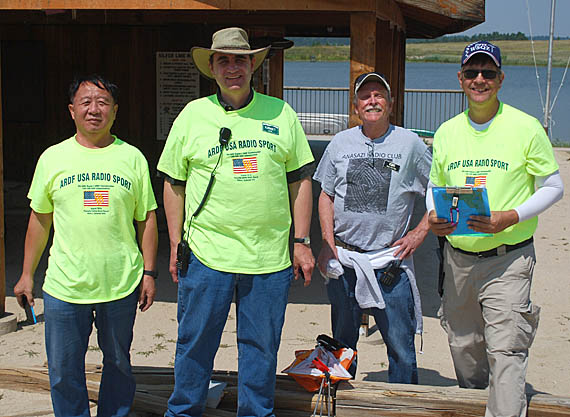
Starting line volunteers for the two-meter classic event on Saturday were Shuya Zhen BD6NX, Dean Mertz KØMKT, Bob Cutter KIØG and Dave Gent W5QZ. Click for more photos.
Thanks to All Helpers
Brian and Marvin worked very hard to make it a successful week. They had enthusiastic support from Doug Berling and Kris Beecroft of RMOC. Members of the OH-KY-IN Amateur Radio Club deserve thanks for providing transmitters for the classic events.
Smooth starting line operation is essential to fair play and participant satisfaction. David Gent, W5QZ of College Station, Texas took on leadership of the starting line crew and did an outstanding job. Dean Mertz, KØMKT of Highlands Ranch, Colorado stepped in as his assistant for all four competition days. Also helping with starts were George Bartling WA9TCD; David Conder NØDEV; Bob Cutter KIØG and Paul Veal NØAH.
Brian now has his ham radio callsign : KBØMAP
More than 125 captioned photos of the championships are in this Homing In Web site. The legacy Event Information Page remains on this site, including the schedule, transmitter frequencies and directions, plus details about maps, transportation, lodging, ranch rules, weather and much more. This was also the source of the latest updates about the gathering locations and times for each day's events.
Below are links to the official results.
Foxoring results, Thursday, August 27
Sprint results, Friday, August 28
Two-meter classic results, Saturday, August 29
Eighty-meter classic results, Sunday, August 30
Portions of this report have been excerpted from my Homing In columns in the August and November 2015 issues of CQ-Plus digital magazine.
Joe Moell KØOV
USA ARDF Coordinator
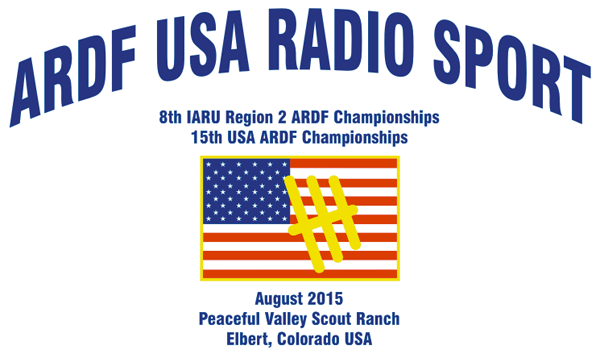
Text and photos copyright © 2015 Joseph D. Moell. All rights reserved.
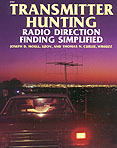 Go to First photo page of this event
Go to First photo page of this event
Go to Championships Foxhunting News -- Recent and upcoming ARDF championships events
Go to International-Style Foxhunting Comes To The Americas -- How we're getting the ball rolling
Go to Equipment Ideas for Radio-Orienteering -- Simple and inexpensive receiving and transmitting solutions
Go to Radio-Orienteering News for Southern California -- Results and stories of recent radio-orienteering events in southern California, plus announcements of upcoming ones.
Go to Foxhunting for Scouts -- Let's get the kids involved
 Back to the Homing In home page
Back to the Homing In home page
This page updated 23 April 2016


 Scouting and Amateur Radio -- what a great combination! Untold numbers of new and old hams first learned about Amateur Radio from Scout leaders. In your father's time, the introduction may have been through QRP contacts on the HF bands at a wilderness campsite. Nowadays it's more high-tech, as Scouts and their leaders coordinate mirror flash experiments between mountaintops using VHF simplex or repeaters.
Scouting and Amateur Radio -- what a great combination! Untold numbers of new and old hams first learned about Amateur Radio from Scout leaders. In your father's time, the introduction may have been through QRP contacts on the HF bands at a wilderness campsite. Nowadays it's more high-tech, as Scouts and their leaders coordinate mirror flash experiments between mountaintops using VHF simplex or repeaters.





